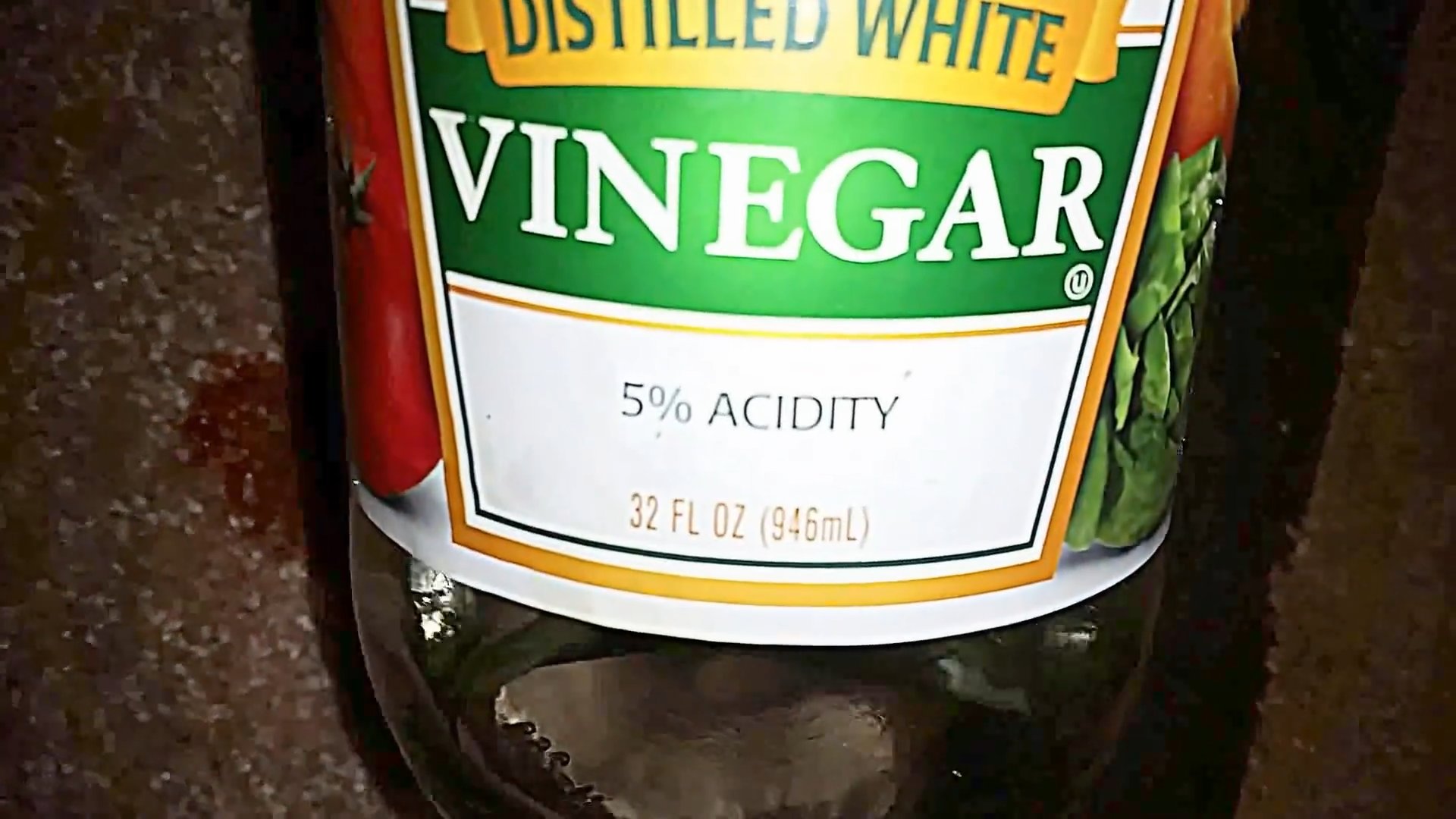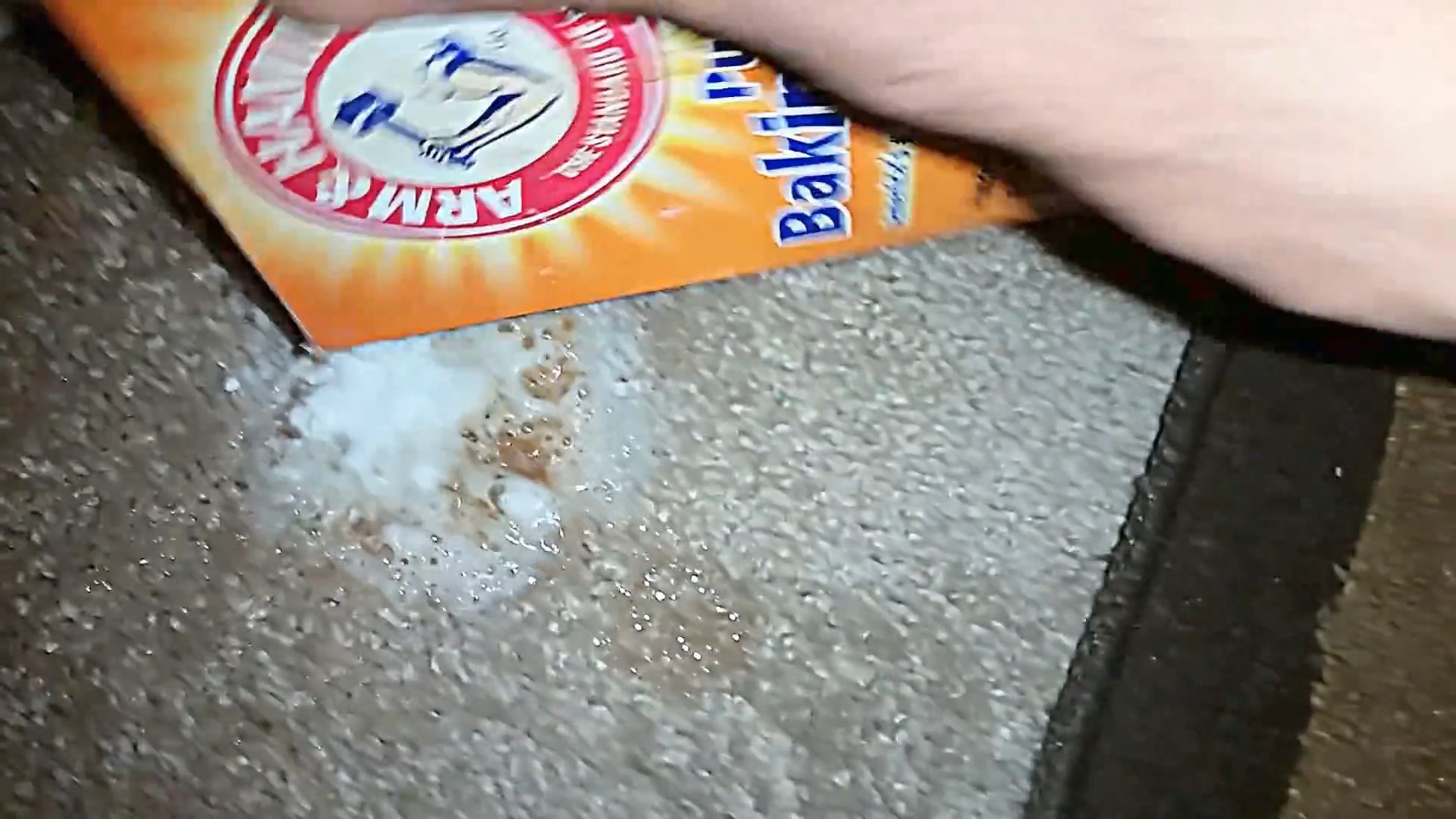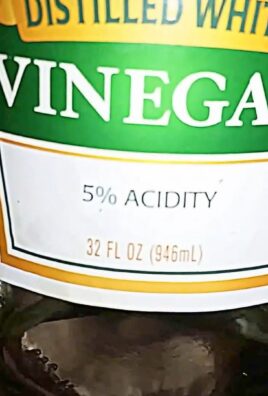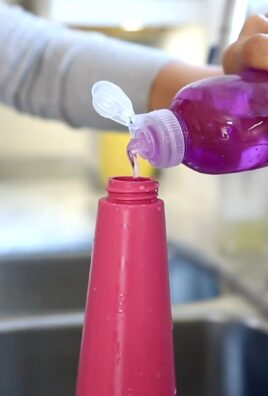Baking Soda Oven Cleaning: Is your oven looking less like a culinary haven and more like a burnt offering site? Don’t despair! I know the feeling – scrubbing away at baked-on grime can feel like a Herculean task. But what if I told you there’s a simple, non-toxic, and incredibly effective way to restore your oven’s sparkle using something you probably already have in your pantry?
For generations, baking soda has been a household staple, not just for baking, but for cleaning too! Its mild abrasive properties and ability to neutralize odors make it a fantastic alternative to harsh chemical cleaners. Think of your grandmother’s cleaning secrets – chances are, baking soda was a key ingredient! This isn’t just some newfangled trend; it’s a time-tested method that’s gentle on your oven and the environment.
Let’s be honest, nobody enjoys spending hours scrubbing a dirty oven. It’s messy, tiring, and often involves breathing in unpleasant fumes. But a clean oven isn’t just about aesthetics; it also impacts the taste of your food and the efficiency of your appliance. Burnt food residue can affect the flavor of your dishes and even cause your oven to overheat. That’s why mastering the art of baking soda oven cleaning is so essential. In this article, I’m going to share my favorite DIY trick for achieving a sparkling clean oven with minimal effort and maximum results. Get ready to say goodbye to harsh chemicals and hello to a naturally clean and fresh-smelling oven!

DIY Oven Cleaning with Baking Soda: A Sparkling Clean Oven the Natural Way!
Okay, let’s face it: cleaning the oven is probably on everyone’s list of least favorite chores. But a sparkling clean oven makes cooking so much more enjoyable! And the best part? You don’t need harsh chemicals to get there. I’m going to show you how to clean your oven using the power of baking soda and vinegar – a natural, effective, and budget-friendly method.
What You’ll Need:
Before we dive in, let’s gather our supplies. This is a pretty simple process, so the list is short and sweet:
* Baking soda (a whole box is a good idea!)
* White vinegar
* Water
* Spray bottle
* Rubber gloves (protect those hands!)
* Sponge or scrubbing brush
* Plastic scraper or spatula (for stubborn spots)
* Paper towels or a clean cloth
* Old towel or newspaper (to protect your floor)
Phase 1: The Baking Soda Paste
This is where the magic begins! We’re going to create a baking soda paste that will work its way into all that baked-on grime.
1. Prepare the Oven: First things first, remove the oven racks. You can soak these in hot, soapy water in your sink while we’re working on the oven interior. Also, spread your old towel or newspaper on the floor in front of the oven to catch any drips or spills.
2. Mix the Paste: In a bowl, mix about ½ cup of baking soda with enough water to form a spreadable paste. You want it to be thick enough to stick to the oven walls but not so thick that it’s difficult to apply. I usually start with a few tablespoons of water and add more gradually until I get the right consistency.
3. Apply the Paste: Put on your rubber gloves (trust me, you’ll thank me later!). Now, using your hands or a sponge, spread the baking soda paste all over the interior surfaces of your oven. This includes the back, sides, top, bottom, and even the inside of the oven door. Avoid the heating elements! You want a nice, even coating.
4. Tackle Stubborn Spots: For those really tough, baked-on areas, apply a thicker layer of the paste. You can even use your plastic scraper to gently loosen some of the grime before applying the paste.
5. Let it Sit: This is the most important part! Let the baking soda paste sit for at least 12 hours, or even better, overnight. The longer it sits, the more time it has to loosen the grime. I usually do this before I go to bed so it can work its magic while I sleep.
Phase 2: The Vinegar Power Wash
After the baking soda has had its time to work, it’s time for the vinegar to step in and create some fizzing action!
1. Prepare the Vinegar: Pour some white vinegar into your spray bottle. No need to dilute it – we want the full cleaning power!
2. Spray the Vinegar: Generously spray the baking soda paste with vinegar. You’ll notice it starts to fizz and bubble – that’s the chemical reaction between the baking soda and vinegar, and it’s exactly what we want! This fizzing action helps to lift the loosened grime.
3. Wipe it Down: Using your sponge or scrubbing brush, start wiping down the oven interior. The baking soda paste, along with the loosened grime, should come off fairly easily. You might need to use a little elbow grease for those extra stubborn spots.
4. Scrape Away Residue: If you encounter any areas where the paste is particularly thick or difficult to remove, use your plastic scraper to gently scrape it away. Be careful not to scratch the oven surface.
5. Rinse and Repeat: Rinse your sponge or scrubbing brush frequently with clean water. You might need to repeat the wiping and scraping process several times to remove all the baking soda residue.
6. Clean the Door: Don’t forget to clean the inside of the oven door! This area often gets overlooked, but it can accumulate a lot of grease and grime.
Phase 3: The Final Touches
We’re almost there! Now it’s time to give the oven a final clean and put everything back in its place.
1. Final Wipe Down: Once you’ve removed all the baking soda paste and grime, give the entire oven interior a final wipe down with a clean, damp cloth or paper towels. This will ensure that there’s no baking soda residue left behind.
2. Clean the Racks: Remember those oven racks soaking in the sink? Now’s the time to give them a good scrub with a sponge or brush. Rinse them thoroughly and let them dry completely.
3. Dry the Oven: Use a clean, dry cloth or paper towels to dry the inside of the oven. This will help prevent any water spots from forming.
4. Reassemble: Once everything is dry, put the oven racks back in place.
5. Optional: For an extra touch of freshness, you can place a bowl of vinegar in the oven and heat it on low for about 30 minutes. This will help to eliminate any lingering odors.
6. Ventilate: Leave the oven door open for a while to allow it to air out completely.
Tips and Tricks for a Sparkling Clean Oven:
* Prevention is Key: To avoid having to do such a deep clean in the future, try to wipe up spills as soon as they happen. This will prevent them from baking onto the oven surface.
* Regular Maintenance: Consider doing a quick oven clean every few months to prevent grime from building up.
* Self-Cleaning Ovens: If you have a self-cleaning oven, you can still use this method for a gentler, more natural clean. Just be sure to follow the manufacturer’s instructions for your oven.
* Lemon Power: For a fresh, citrusy scent, add a few drops of lemon essential oil to your vinegar spray.
* Tough Stains: For extremely stubborn stains, you can try making a paste of baking soda and hydrogen peroxide. Apply it to the stain, let it sit for a few minutes, and then scrub it away.
* Don’t Forget the Glass: To clean the glass on your oven door, you can use the same baking soda paste and vinegar method. You can also use a glass cleaner specifically designed for ovens.
* Patience is a Virtue: Remember, this method takes time and patience. Don’t get discouraged if you don’t see results immediately. The longer you let the baking soda paste sit, the better it will work.
* Safety First: Always wear rubber gloves when cleaning your oven to protect your hands from the baking soda and vinegar. And be sure to ventilate the area well.
* Alternative to Vinegar: If you don’t have vinegar, you can use lemon juice as a substitute. It has similar cleaning properties and a pleasant scent.
* Baking Soda Alternatives: While baking soda is the star of this show, you can add a little salt to the paste for extra scrubbing power.
Troubleshooting:
* Paste Not Sticking: If your baking soda paste isn’t sticking to the oven walls, try adding a little more water to make it slightly thinner.
* Vinegar Not Fizzing: If the vinegar isn’t fizzing when you spray it on the baking soda paste, it could be that the baking soda has already dried out too much. Try spraying the paste with a little water before applying the vinegar.
* Stubborn Grime: If you’re having trouble removing stubborn grime, try using a plastic scraper or a stiff-bristled brush. You can also try making a paste of baking soda and dish soap.
* Lingering Odor: If you notice a lingering odor after cleaning your oven, try placing a bowl of baking soda in the oven overnight. Baking soda is a natural odor absorber.
I hope this guide helps you achieve a sparkling clean oven without the use of harsh chemicals! Happy cleaning!

Conclusion
So, there you have it! Growing strawberries at home, especially using our simple DIY trick, is not just a gardening project; it’s an investment in fresh, flavorful, and organically grown fruit right at your fingertips. Forget those bland, store-bought berries that lack the vibrant sweetness of homegrown varieties. With minimal effort and a little bit of patience, you can transform your balcony, patio, or garden into a thriving strawberry patch.
Why is this DIY method a must-try? Because it’s accessible, affordable, and incredibly rewarding. It eliminates the need for extensive gardening knowledge or expensive equipment. Our method focuses on maximizing space and yield, making it perfect for urban dwellers or anyone with limited outdoor space. Plus, you have complete control over the growing process, ensuring your strawberries are free from harmful pesticides and chemicals. You’ll be amazed at the difference in taste and texture compared to commercially grown strawberries.
But the fun doesn’t stop there! Feel free to experiment with different strawberry varieties to find your favorites. Everbearing strawberries will provide you with fruit throughout the growing season, while June-bearing varieties offer a concentrated harvest. Consider companion planting with herbs like basil or thyme to deter pests and enhance the flavor of your berries. You can also adjust the soil mix to suit your specific climate and growing conditions. For example, if you live in a particularly hot climate, adding more organic matter to the soil will help retain moisture.
Don’t be afraid to get creative with your container choices, either. While we’ve suggested specific types of containers, you can repurpose old buckets, baskets, or even tires to create unique and eye-catching strawberry planters. Just make sure your chosen container has adequate drainage to prevent root rot.
Growing strawberries at home is more than just a way to get fresh fruit; it’s a connection to nature, a therapeutic activity, and a source of immense satisfaction. Imagine the joy of picking your own ripe, juicy strawberries and using them in your favorite recipes, from strawberry shortcake to homemade jam.
We wholeheartedly encourage you to give this DIY trick a try. It’s a simple, effective, and enjoyable way to bring the taste of summer to your home. And once you’ve experienced the delight of homegrown strawberries, we’re confident you’ll be hooked!
We’d love to hear about your experiences! Share your photos, tips, and stories with us in the comments section below. Let’s build a community of strawberry enthusiasts and inspire others to embark on their own homegrown strawberry adventures. What variety did you choose? What challenges did you face, and how did you overcome them? Your insights could be invaluable to other aspiring strawberry growers.
So, grab your gardening gloves, gather your supplies, and get ready to enjoy the sweet taste of success. Happy growing!
Frequently Asked Questions (FAQ)
What is the best time of year to plant strawberries?
The best time to plant strawberries depends on your climate and the type of strawberries you are planting. Generally, early spring (after the last frost) or late summer/early fall are ideal. Planting in the spring allows the plants to establish themselves before the heat of summer, while fall planting gives them a head start for the following spring’s harvest. For everbearing varieties, spring planting is often preferred to maximize the first year’s yield. Consider your local climate and consult with a local nursery for specific recommendations.
What kind of soil is best for growing strawberries?
Strawberries thrive in well-draining, slightly acidic soil with a pH between 5.5 and 6.5. The soil should be rich in organic matter to provide essential nutrients and retain moisture. Amend your soil with compost, well-rotted manure, or peat moss to improve its texture and fertility. Avoid heavy clay soils that can become waterlogged, as this can lead to root rot. A good soil mix for container-grown strawberries is a combination of potting soil, compost, and perlite or vermiculite for drainage.
How often should I water my strawberry plants?
Water your strawberry plants regularly, especially during dry periods. The soil should be consistently moist but not waterlogged. Water deeply at the base of the plants, avoiding wetting the foliage, which can promote fungal diseases. Check the soil moisture regularly by sticking your finger into the soil. If the top inch feels dry, it’s time to water. Container-grown strawberries may need more frequent watering than those planted in the ground, especially during hot weather.
How much sunlight do strawberries need?
Strawberries need at least 6-8 hours of direct sunlight per day to produce abundant fruit. Choose a location that receives full sun for the majority of the day. If you live in a particularly hot climate, some afternoon shade may be beneficial to prevent the plants from overheating. Insufficient sunlight can result in smaller yields and less flavorful berries.
What are some common pests and diseases that affect strawberries, and how can I prevent them?
Common pests that affect strawberries include aphids, spider mites, slugs, and birds. Diseases include gray mold (Botrytis), leaf spot, and root rot. To prevent pests, inspect your plants regularly and remove any infested leaves or berries. Use organic pest control methods such as insecticidal soap or neem oil. Protect your berries from birds with netting. To prevent diseases, ensure good air circulation around your plants, avoid overwatering, and remove any diseased leaves or berries promptly. Consider using a fungicide if necessary, but always follow the instructions carefully.
How do I fertilize my strawberry plants?
Fertilize your strawberry plants regularly with a balanced fertilizer that is specifically formulated for berries. Apply the fertilizer according to the package instructions, typically in the spring and again after the first harvest. Avoid over-fertilizing, as this can lead to excessive foliage growth and reduced fruit production. Organic fertilizers such as compost tea or fish emulsion are also excellent choices.
How do I overwinter my strawberry plants?
In colder climates, strawberry plants need protection during the winter months. Mulch around the plants with straw or pine needles to insulate the roots and protect them from freezing temperatures. If you are growing strawberries in containers, you can move them to a sheltered location such as a garage or shed. Water the plants occasionally during the winter to prevent the soil from drying out completely. In milder climates, overwintering may not be necessary.
Can I grow strawberries indoors?
Yes, you can grow strawberries indoors, but it requires providing them with adequate light and proper care. Use grow lights to supplement natural sunlight and ensure they receive at least 12-14 hours of light per day. Choose a self-pollinating variety and pollinate the flowers manually with a small brush. Maintain a consistent temperature and humidity level.
How long does it take for strawberries to produce fruit?
The time it takes for strawberries to produce fruit depends on the variety and the growing conditions. Generally, June-bearing strawberries will produce fruit the following spring after planting, while everbearing strawberries may produce some fruit in the first year. Expect a full harvest in the second year. Be patient and provide your plants with the care they need, and you will be rewarded with delicious, homegrown strawberries.
What are some good companion plants for strawberries?
Good companion plants for strawberries include borage, basil, thyme, garlic, onions, and marigolds. These plants can help deter pests, attract beneficial insects, and improve the flavor of your strawberries. Avoid planting strawberries near members of the nightshade family, such as tomatoes, peppers, and eggplants, as they can compete for nutrients and attract similar pests and diseases.





Leave a Comment